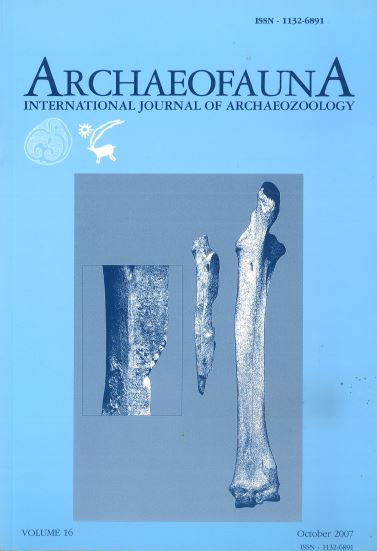La reducción del tamaño de los guanacos (Lama guanicoe) entre el Pleistoceno final y el Holoceno en el extremo austral de Patagonia continental
Keywords:
Guanaco, Sothern Patagonia, Osteometry, Late Pleistocene-Holocene, TemperatureAbstract
The aim of this paper is to evaluate, by means of a multivariate approach, the temporal variation in the size of the appendicular bones of guanaco (Lama guanicoe). The anatomical units are the proximal and distal metacarpals and the second phalanges. All samples derive from four archaeological and one paleontological site from Southern Patagonia (Argentina and Chile), and belong to two different time periods: Late Pleistocene (ca. 12,000-10,000 radiocarbon years BP) and Early/Mid Holocene (ca. 8000-6000 y 6000-4000 radiocarbon years BP). The data were statistically tested using an analysis of the variance in order to spot differences in size through time. The results show that all of the anatomical units were significantly larger during the Late Pleistocene. Further comparison with a paleoclimate proxy of hemispheric relevance (i.e., CO2 data from Dome C, Antarctica) shows that there exists a significant negative covariation between temperature and bone size suggesting that the observed decreasing trend in size during the Holocene was a response to the increase in temperature during this period.

